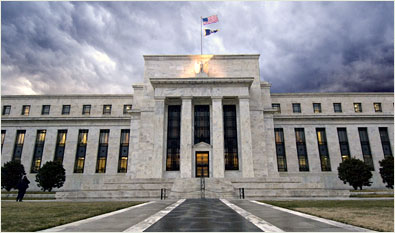
Fire Insurance Update- Market update October 13, 2019
\
It can happen again!
Be prepared and be covered
Do you need fire insurance, been cancelled or know anyone who has? It can be frustrating. Let me take the worry out of the situation and find you a policy you can live with. Let me answer your questions and guide you through the process.
Join our Facebook Page “Fire Insurance Information and Inquiries” here:
https://www.facebook.com/groups/424062531773299/
This page has updates and posts from other homeowners and people asking the same questions.
Sign our petition on Change.org. Click link below:
Specifically it asks:
The Organization for Affordable Fire Insurance
The increase in the cost of fire insurance is hitting the working family through no fault of their own. Many can’t afford the massive increases and for many the added costs are crippling budgets and hurting the state economy. We the people of California petition the Governor to allocate emergency funds to reimburse all those that have had premium increases over and above the CPI inflation index. We also request the insurance commissioner to negotiate and regulate insurance companies to resume underwriting in fire prone areas with reasonable and if necessary subsidized rates.
Need guaranteed income for life? Never outlive your money? How about a minimum guaranteed with also stock market upside participation possible? The Best of Both Worlds. Or monthly income? Retirement planning? College planning? Tax free pass on assets to heirs with no tax?
CONTACT ME.
(530) 559 1214
----------------------------------------------------------------------------------------------------------------------

I
I
I
I
I
I
I
I
VVVVV
VVV
V

Look at the photo above: The people represent the banks with the money falling from the Fed in the REPO Market.
(keep reading)
269934
Since the 2008 crisis, the Federal Reserve injected somewhere in the area of 5 trillion dollars into the banking system both here and abroad to help stabilize the financial system which was spiraling out of control due to the real estate implosion.
They also guaranteed another 7 trillion or so (https://michael-hudson.com/2011/06/how-a-13-trillion-cover-story-was-wri...) of debt from various institutions.
It’s safe to say things have calmed down a bit since then, with the markets rising to new highs and the real estate market taking off the to the proverbial races since 2011.
That said, the last few weeks witnessed a blast from the past in an area of the financial markets few people understand or probably even know it exists. This seldom discussed but very important part of the marketplace is called “Overnight Repurchase Agreements” (repos) mechanism.
The repo market is the plumbing of the financial system. Banks, businesses and financial institutions of all types rely on this market to finance their day to day operations. Billions of dollars flow into and out of this market daily. The various entities borrow funds to operate, while still others deposit their excess funds for safekeeping and possible income.
The market operates funding for as short as overnight to longer terms.
From CNBC: “In a repo trade, Wall Street firms and banks offer U.S. Treasuries and other high-quality securities as collateral to raise cash, often overnight, to finance their trading and lending activities. The next day, borrowers repay their loans plus what is typically a nominal rate of interest and get their bonds back”.
Think of it as a huge octopus taking in and handing out thousands of loans a second to various branches of business and markets.
If demand for funds increases, the interest rates paid for accessing these loans may rise. On the contrary, if demand falls off for this type of funding, interest rates might fall.
The interest rates on repos usually run about 2.25% and a baseline is set by the Fed although the rate in the day to day repo market moves up and down based on demand. The repo rates typically follow the Fed’s baseline rate closely however a few weeks back the repo rate rose to 4% then skyrocketed to 8%.
Known as liquidity, it simply means the demand for quick cash was soaring. Higher than normal rates can cause serious turmoil as the cost to institutions rise past what is budgeted and expected. 8% is regarded as extremely high to put it mildly.
As rates climbed the Fed intervened injecting close to 53 billion dollars into the repo market starting two weeks back. The injections happen when the Feds purchase Treasuries and other debt (known as agency debt) from the various institutions known as “Primary Dealers” in the group. This is a group of 24 big banks and trading firms that have an agreement to participate in swapping debt for cash and vice versa which acts like a gas pedal to the overall money supply in the system.
The intervention was the first one since 2008. Ominous sounding, the recent rate spike was called “bordering on chaos” by a BMO Capital Markets strategist.
In an opposite move last year, the Fed started selling debt back to the repo dealers over many months to the tune of 700 billion in an attempt to rid itself of some of its holdings, which the Feds had stockpiled during the crisis. Now the Feds found it necessary to reverse some of those transactions as rates climbed.
This spike and subsequent move by the Fed doesn’t necessarily mean the environment resembles 2008/09 liquidity crisis but it definitely doesn’t make this analyst sleep any better.
Only time will tell if the recent machinations by the Fed solved the problem and it was a simple one-off temporary occurrence or a sign of something more ominous going on in the financial gearbox of the economy.
Before I sent article this to publishing, on September 18th, the New York Fed printed up another $75 billion to inject into the “repo” market — on top of another $53.2 billion the day before. On September 26, the Fed added yet another 71 billion and its becoming increasing hard for me to keep current!
It is getting more interesting by the day.
Who knows how much more will be added by the time you read this?
This article expresses the opinions of Marc Cuniberti and are opinions only and should not be construed or acted upon as individual investment advice. Mr. Cuniberti is an Investment Advisor Representative through Cambridge Investment Research Advisors, Inc., a Registered Investment Advisor. Marc can be contacted at SMC Wealth Management, 164 Maple St #1, Auburn, CA 95603 (530) 559-1214. SMC and Cambridge are not affiliated. His website is www.moneymanagementradio.com. California Insurance License # OL34249







